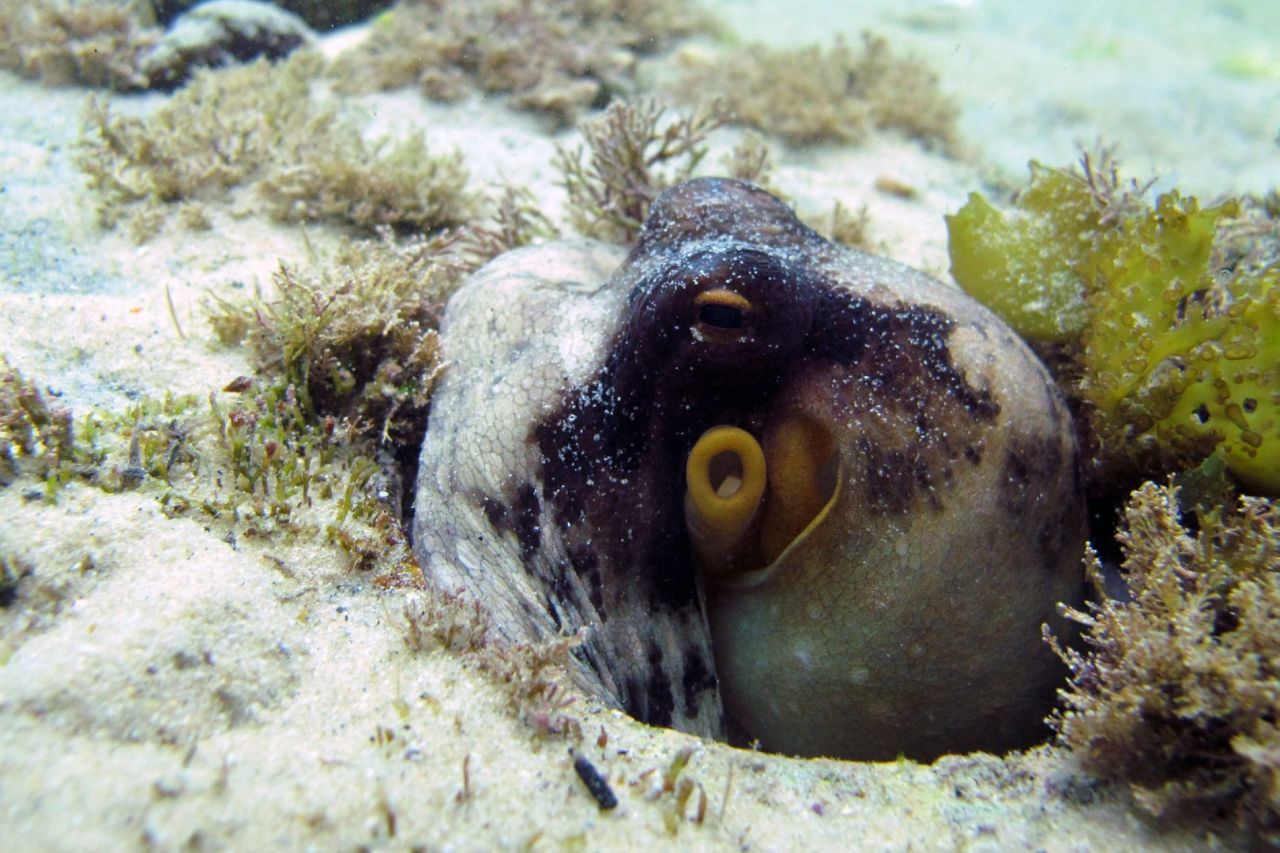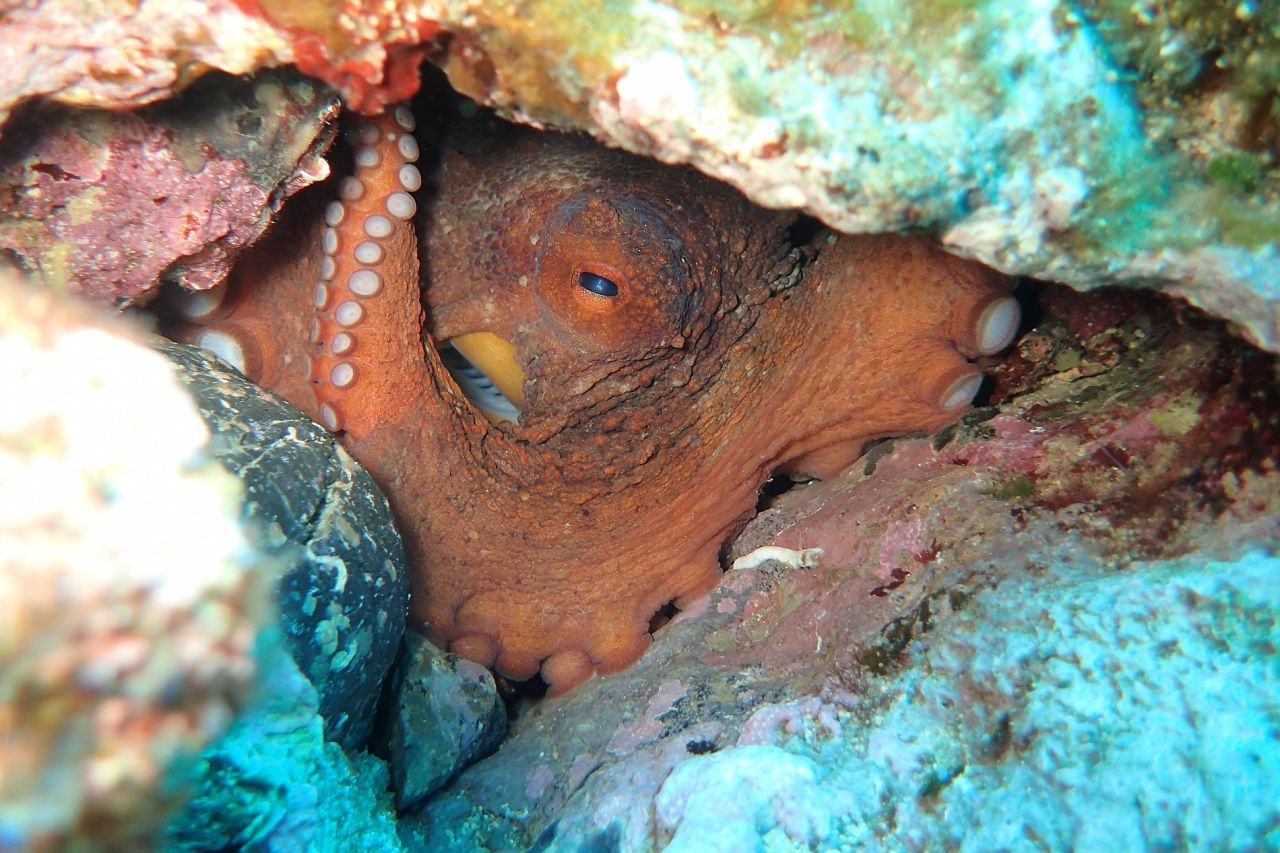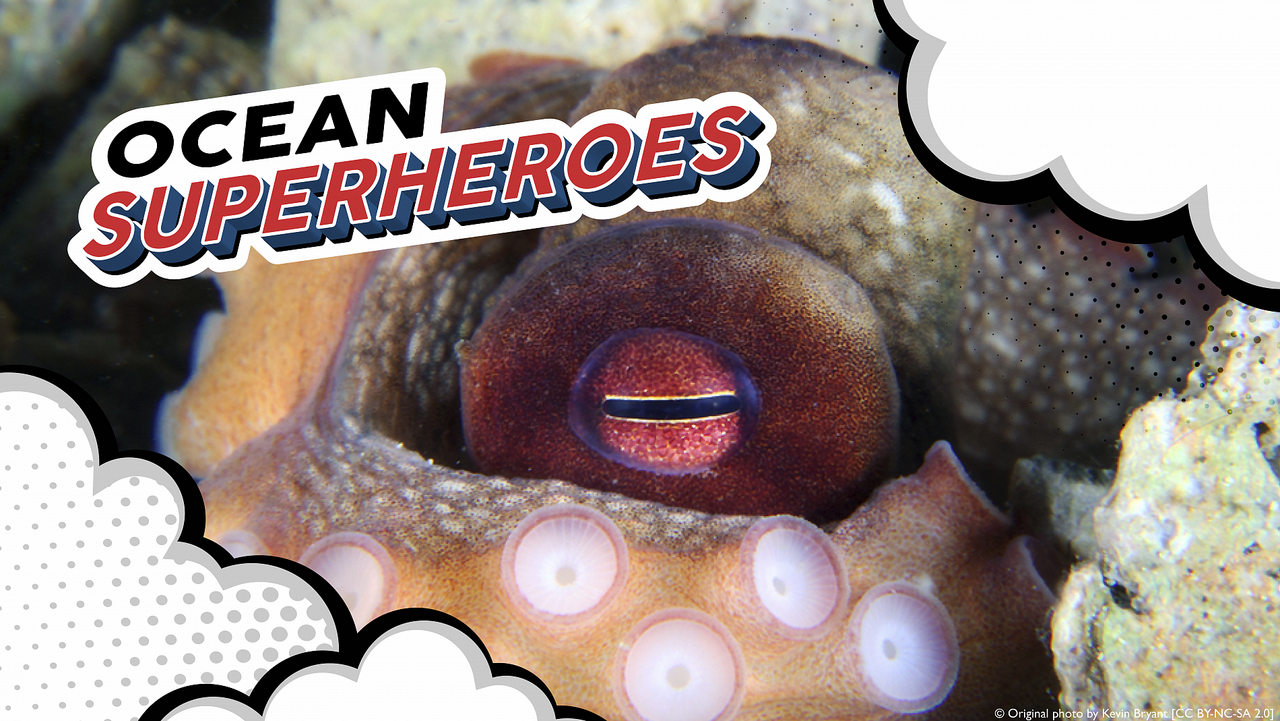There's no doubt that octopuses are the ultimate masters of camouflage. With the ability to rapidly change their colours and shape, the intelligence to use their environment to their advantage, and the skill to mimic other objects, octopuses are ink-credible!
But how do they do it? Let's take a quick look at some of the octopuses abilities:
Chromatophores - Light absorbers
Just beneath their skin, octopuses have thousands of cells called chromatophores. Each of these cells has a tiny sac filled with either a red, orange, brown, yellow or black pigment and by stretching or squeezing these sacs, they can rapidly change the brightness of each of these colours. All cephalopods have chromatophores for signalling and camouflage.
Iridophores - Light benders
Under the chromatophores, lies a specialised layer of cells that play a role in reflecting surrounding light, allowing an octopus to even more closely match the shades surrounding it. These iridophore cells are filled with hundreds of tiny mirror-like structures called reflectosomes that reflect light back up through the octopus' skin allowing colours to appear brighter if desired. These reflecting surfaces are also responsible for adding shades of blue and green to the octopus' colouration, as its pigments are unable to produce these colours.
On the surface, this scattered light always appears white, but in deeper waters it allows the octopus to passively scatter light in whatever wavelengths are present in its environment - providing passive camouflage if the octopus is caught off-guard. The intensity of this reflective layer is controlled by the upper chromatophores, providing the octopus with additional colour options, including disruptive camouflage if desired.

Papillae - Texture changers
Apart from all those reflectors and pigments, octopus skin also have the ability to rapidly change its texture using small muscle bundles called papillae. Muscles in these bundles form a network, with some running radially and others in circles, allowing areas of skin to be quickly smoothed out or raised as needed - a bit like goosebumps (just way more useful).
Does an octopus know what colour it is?
The abovementioned abilities are made even more remarkable by the fine control that octopuses have over these individual elements. You probably already know that octopuses are one of the smartest animals on Earth, so these abilities might not surprise you. But, what if we told you that octopuses are actually colourblind? It's true. Octopuses only have one type of receptor in their eyes, which means they are completely colourblind, only seeing the world in shades of grey.
Fortunately, octopuses have two really awesome tricks up their eight sleeves to deal with this. The first is in their arms - even though they can't see colour, they can feel it (no jokes). Using chemicals called opsins in tiny fibres on their arms, octopuses can sense colour by the changes in the wavelengths of light reaching these receptors.
Their second trick is those weirdly shaped pupils. Photographers have heard of chromatic aberration, a distortion of colours in a photo when the lens fails to focus all the colours in an image correctly at the same time. Octopuses, squids and cuttlefish use their weird eyes to exploit this phenomenon, they break up light and then focus on different parts of it separately - even though all they see is grey, they "know" what colour it is because of know much it bent. No other animal does anything like this!

So to wrap up, here's how an octopus camouflages: It uses its eyes to see the darkness, texture and layout of a scene. Its pupils distort light to get a rough idea of colour. That info is sent from its brain to the eight arm-brains that add colour information from their tiny fibres. The arms then decide how to tint, deflect and scatter light, while the main brain keeps the system in order. Its skin matches the texture of the surroundings, and the octopus moves into a position to blend in better.
If that's not the ultimate ocean superpower, we don't know what is!





